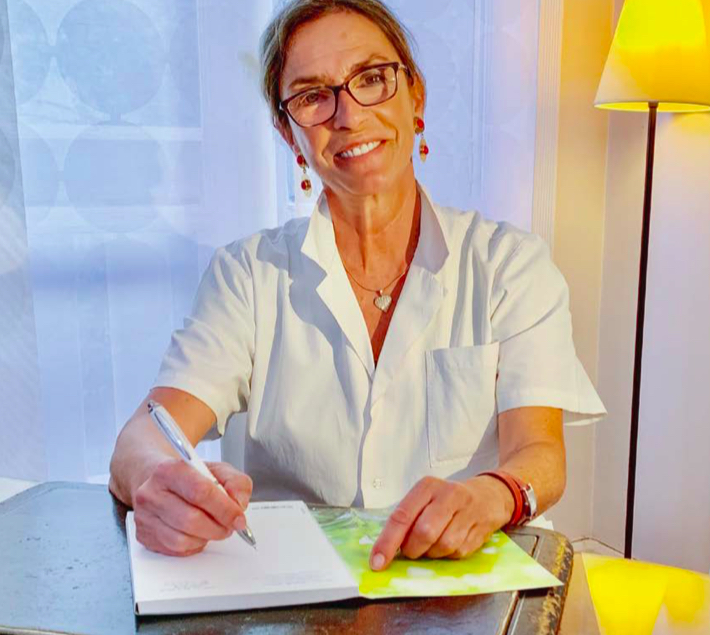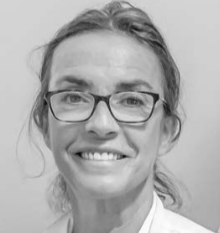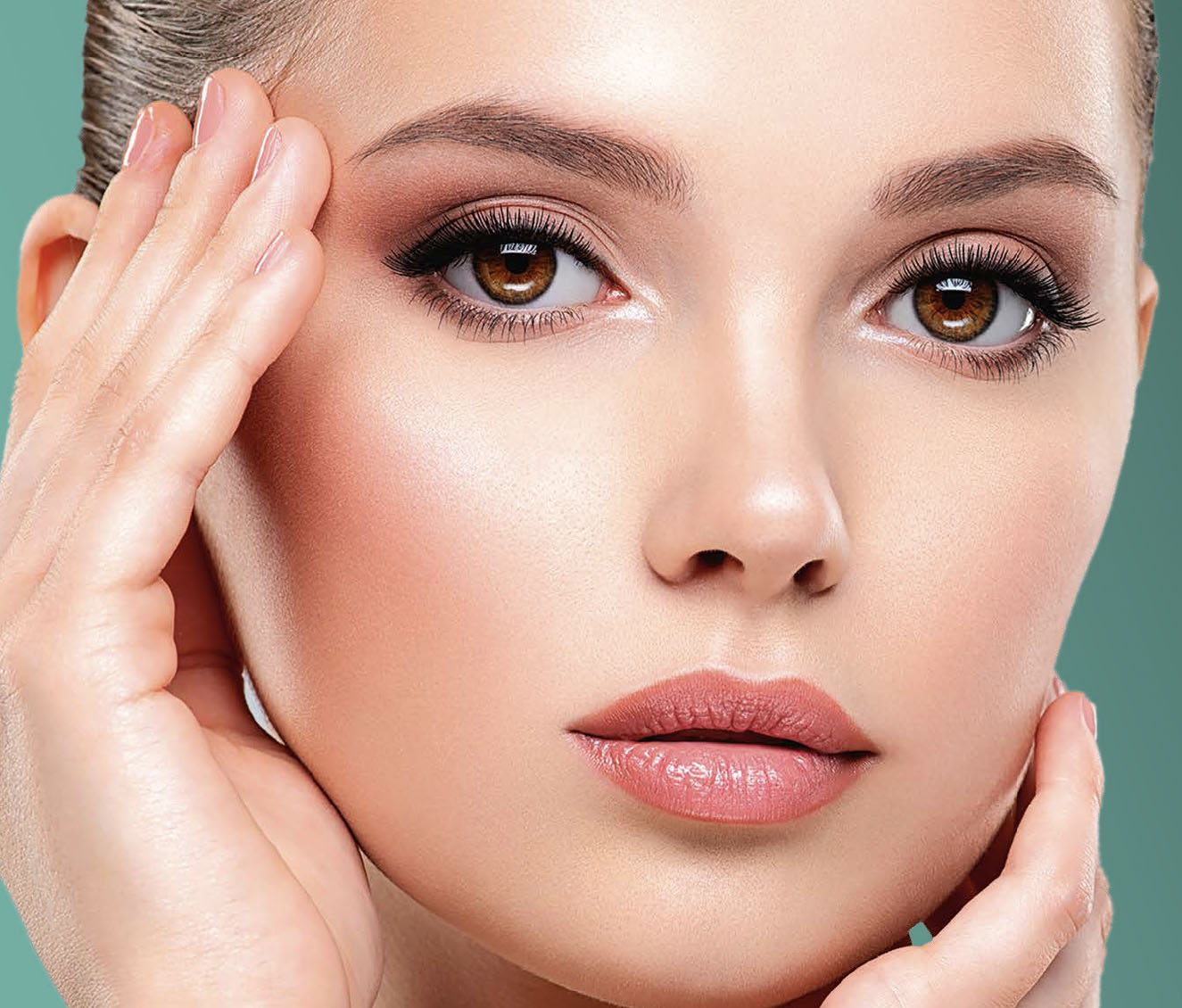By the Doctor Isabelle Catoni
“A vocation”. As the daughter of a country GP, I knew I wanted to be a doctor at age 6. Gynaecologist, psychiatrist…? In the end, I chose dermatology, which allows me to treat the human body as a whole, since the skin reflects any illnesses or brain turmoil, as I have seen over the course of my 30-year career.
 Tell us about your career.
Tell us about your career.
I studied medicine and specialised in dermatology at René Descartes university in Paris. After doing internships in various Parisian hospitals – St Louis, Tarnier Cochin, Bichat – I started working in private practice in 1990. I have been based in Neuilly/Seine since 2003.
When lasers came to France, it was a clear turning point in my life. In 1993, like two of my colleagues – Doctors Jean Luc Lévy in Marseille and Simon Berrebi in Paris – I bought one of the first Q-Switch pigmentary lasers. For the first time, we were able to erase natural brown or black pigmentation – like birth marks, age spots, and artificial pigmentation like tattoos – without leaving a scar.
How did you become a laser specialist ?
My knowledge of quantum physics was not good enough to fully understand how photons work, and this absence of knowledge led me to create the first university diploma in “Laser treatments for dermatology, angiology and reparative surgery” back in 2001. This university diploma, for which I was a coordinator and tutor, allowed me to study, over time, all of the new technologies on the market.
Once I had extended my panel of aesthetic treatments (peels, injections, toxin) and purchased more devices (ultrasounds, radiofrequency, Tixel, etc.), this specific diploma became an “Interuniversity degree in dermatological procedures: art and vigilance”, so that we could teach all aesthetic procedures. This was a thrilling venture which has lasted 20 years and has trained almost 1,000 professionals.
What do you think of the evolution of aesthetic medicine?
Beyond training in a number of techniques that are constantly evolving (botulinum toxin, hyaluronic acid in- jections, peels, etc.), it became vital, in my mind and at a time when this did not exist, to put aesthetics experts in contact with one another in order to talk about their experiences, complex cases, successes and failures, good practice. These meetings with fellow specialists, at congresses and training courses, are very common nowadays, since we created the AREDEP (Dermatological and Plastic Research Association) in 1994, with three surgeons and two dermatologists (Patrick Bui, Marc Divaris, Bernard Mole and Jean-Romain Manciet, Bernard Peyronnet). It was a real challenge, as the rift between the different professionals ran very deep.
This association (governed by the French law of 1901) was the first to bring together, at annual congresses and themed events, the main actors in medicine and surgery who wanted to candidly share their experiences. It was always about vigilance. Our questions were all about our treatments: were they safe, trustworthy, risk-free? As pioneers, we even invented the “AREDEP Beauty Passport” for patients, in which we recommend that doctors note all of the procedures and add all the traceability stickers of any products injected in order to avoid any risk of complications that might arise due to incompatibility.
After this enriching venture, which lasted more than 15 years, I took part in various training courses, teaching courses, work-groups, and national and international congresses, either as part of their scientific committee or as a speaker (IM- CAS, AMWC, SBME, FACE, DEFEE, F@ce2face, EBAME, SFME…). I also have the honour of being a member of the SAMCEP board. For me, this society brings together the qualities of independence, scientific stringency and openness that allow aesthetic medicine and surgery to progress.
Nowadays, aesthetic medicine is a speciality in its own right, and is recognised and applauded by the “Aesthetic Medicine Awards”, which encourage and reward the protagonists every year. I am proud to be part of their scientific committee.
How would you define your work? Do you have any tips or advice?
My work is very technical. I work with my hands; I am a craftsperson. It requires physical effort: lasers are noisy, you’re bent over; radiofrequency is hard on the wrists; ultrasound sessions take an hour; injections require concentration and precision… I sometimes compare myself to an artist who works with depth, colour, shape.
A great many of my aesthetic procedures are dedicated to boosting the skin’s radiance, improving its texture, erasing red or brown marks. I use cold lasers for photobiomodulation. This innovation is essential as current research allows us to achieve effective results, avoiding downtime wherever possible while minimising the number of sessions required. This is how “tightening” techniques came into play, which involve heating up the fibroblasts to a certain temperature, without burning the epidermis, to recreate the fibres that tighten up the skin.
My work was very aggressive on the skin 25 years ago, but it has now become gentler thanks to new technologies. I was surprised, when I used Miltaderm’s cold lasers, at the power light had on the cells. I include them in the protocols I have developed to erase scars, stretch marks, treat acne, rosacea, to densify the skin and boost elasticity on the face rather than to alter its volumes.
I have developed some “tips” that I use every day such as a technique I have called “pointillism” to reduce the risk of hyperpigmentation when treating marks with lasers. For treating very fine lines and dilated pores, I created “boxoxytherapy”, and I optimise the results of mesotherapy with my “mesopistol” techniques.
Where possible, I recommend modifying certain lifestyle habits to avoid inflammation issues.
Finally, I am a fervent admirer of Dr Frédéric Braccini’s “less is more” approach, paying careful attention to the quantity of product injected: everything remains and everything slips down to the lower face. I am careful never to inflict a treatment on a patient if I would not do it to my loved ones. “Beautiful at any age”, for me, means that every face has its own beauty, and that erasing all wrinkles is a mistake, that we should only correct those that give an impression of sadness or bitterness. “Aging beautifully” without artificially transforming the patient’s innate beauty is my motto.
Are you pleased you chose this speciality and what are your predictions for the future?
This speciality has enabled me to stay enthusiastic about my work, as this constantly evolving knowledge changes what we take for granted.
Great specialists have enabled me to learn more about the mechanisms and complexity of the cell regeneration process, including repairing the skin by stimulating it and heating it without destroying it.
I am fascinated by cellular life, the inter-cellular interactions and communication, and by the fundamental role that microorganisms play in our skin and inside our bodies. We have extraordinary potential; our cells are capable of waking up following specific stimulation and “re-manufac- turing” themselves, as though there were something eternal inside of us all. This is how, for example, an elderly person is able, after an operation or fall, to start producing bone or dermis again, and I think that is fantastic.
There is still one battle left to win: treating the body…
In my practice, though cryolipolysis is definitely effective on localised fat stores, it is much more difficult to treat skin sagging on the body, as the skin is much heavier than on the face. We have achieved encouraging results after several sessions using “microwave” technologies. I think that using several technologies in one session is the most promising solution for treating the body as a whole.
I have great hopes for the transdermal passing of actives to treat surface lines using the Tixel and other devices such as fractional radiofrequency. Of course, there is still a lot we do not know:
- Why are there “good” and “bad” responders?
- Why does one cell react to stimulation while another does not?
- Have we sufficiently evaluated the role of dermal micro-vascularisation in our treatments?
 Docteur Isabelle Catoni.
Docteur Isabelle Catoni.
109 bis avenue Charles de Gaulle
92200 Neuilly sur Seine.
More information on Internet dermatologue-catoni.com














